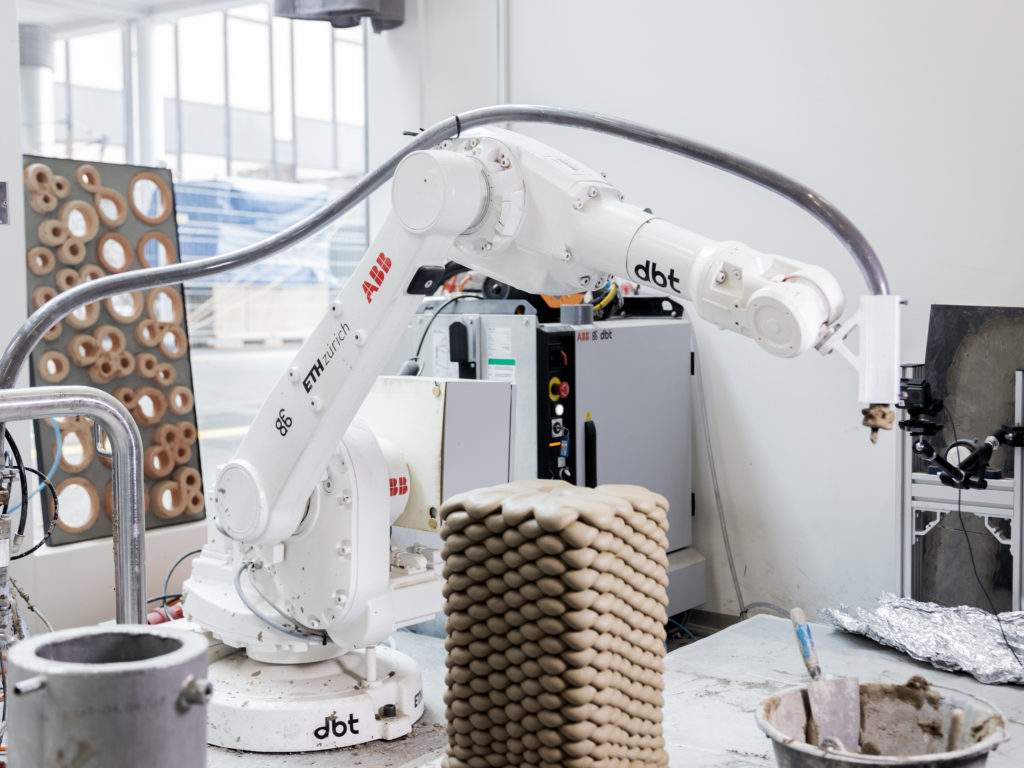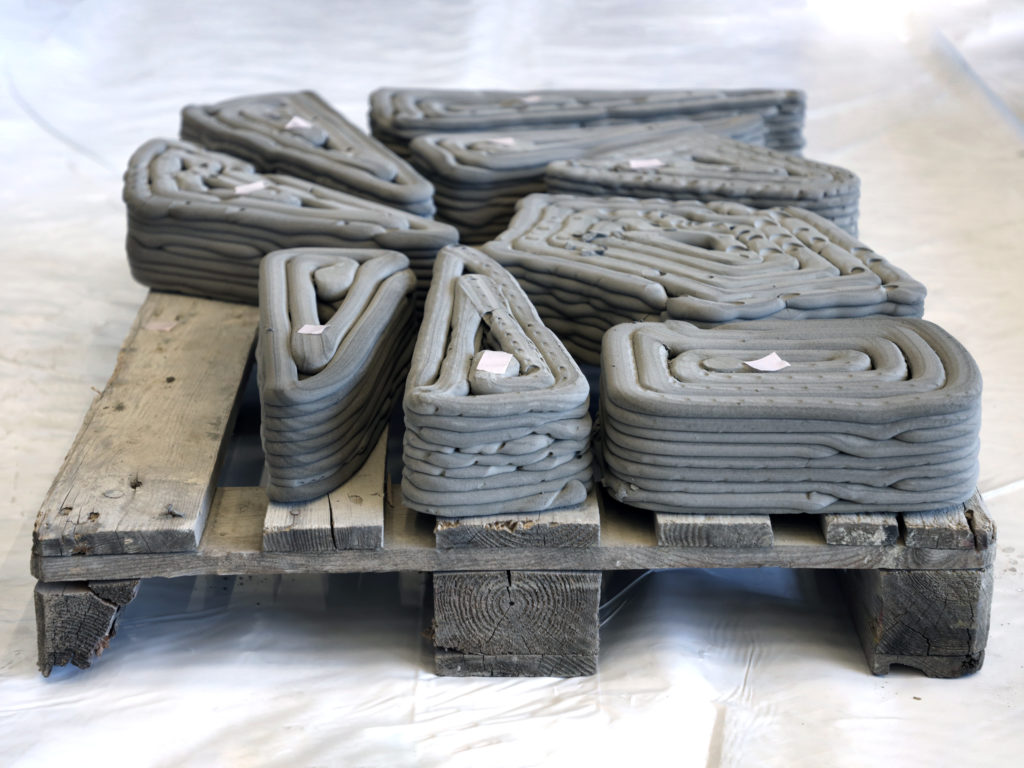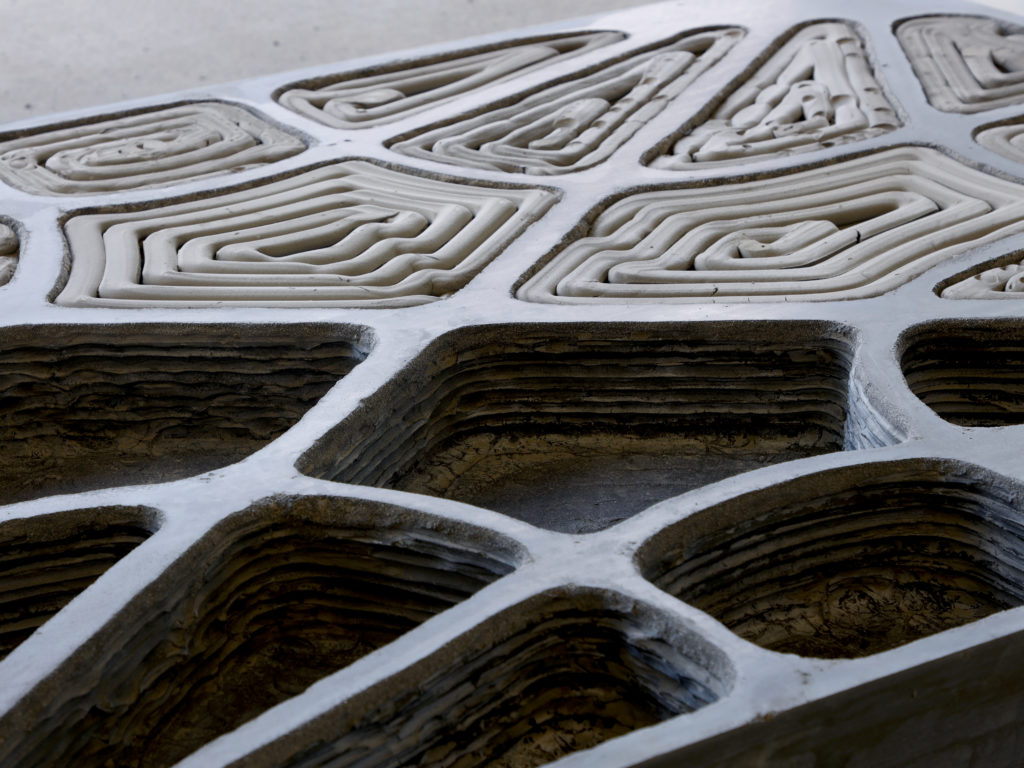As exciting as 3D printed buildings are, the additive construction industry is only beginning. In fact, the concrete 3D printing we now see across the sector may seem incredibly outdated and primitive as the true potential of the technology is developed. This is already being evidenced by the leading Swiss technical university ETH Zürich, where researchers in the Digital Building Technologies division have showcased a method for creating lightweight formwork for concrete casting using foam 3D printing.

ETH Zürich’s foam 3D printing robot. Image courtesy of ETH Zürich.
As demonstrated in the video below, the ETH team used foam 3D printing (F3DP) to create stay-in-place or temporary and recyclable formwork for concrete casting, the group calls FoamWork. Created by ETH PhD researcher Anna Szabo in partnership with FenX AG, the foam is a mineral-derived material made from recycled waste. By incorporating these 3D printed foam elements into a formwork, the researchers believe that it is possible to reduce concrete usage by 70 percent while creating a lighter weight formwork with better insulation.
To showcase the possibilities, the group created a 2 x 1.3m ribbed slab with point supports at each corner. The design traces the isostatic lines of the principal stress pattern, in turn necessitating 24 pieces of 3D printed foam made up of 12 shapes. Once those pieces were printed using F3DP, they were manually inserted into a timber perimeter formwork. Ultra-high-performance fiber-reinforced concrete was then poured into the formwork. Upon curing, the timber was removed, revealing the complete concrete element.

3D printed foam elements for concrete foamworks. Image courtesy of ETH Zürich.
Likely less eco-friendly than FoamWork is a plastic 3D printing material developed by German chemical giant BASF with 3D printer manufacturer BigRep. The idea is essentially the same: produce formwork elements for concrete casting that can be recycled for subsequent builds. The big difference is that FoamWork is the mineral foam material, which must be lighter than BASF’s plastic alternative.
While we will surely continue to see the occurrence of concrete 3D printing similar to the work performed by PERI Group, Holcim and others, it’s difficult to imagine widespread adoption of this technique outside of these types of showy projects—at least in the near future. More realistically and at a larger scale, we can imagine that 3D printing will be used for the production of formworks. This will be more easily integrated into existing construction operations, especially at first, similar to how more traditional forms of 3D printing are being used for tooling on assembly lines.

The completed concrete slab with half of the 3D printed foam elements removed. Image courtesy of ETH Zürich.
To improve the technology, the team is working with concrete 3D printing colleagues at ETH Zürich, doctoral research Patrick Bedarf told 3DPrint.com. This will include developments related to process automation, scale, and types of materials. For instance, the foam 3D printing may occur within timber formwork, eliminating the need for manual placement. Bedarf also said, “We’re working on increasing the built area and size significantly.”
“Our goal is to create freeform, insulated, structural building components on demand in the future. In this project we show how custom formwork shapes for material-efficient concrete structures can be efficiently produced with our F3DP method. Otherwise, subtractive methods would be used, which are very wasteful,” Bedarf said.
The researchers believe that this F3DP method could significantly improve the sustainability of the construction industry. With the ability to fabricate complex foam geometries impossible with conventional production methods, builders could manufacture foam elements for stay-in-place applications or temporary pieces that can be removed and recycled for subsequent formworks.

The completed concrete slab with half of the 3D printed foam elements removed. Image courtesy of ETH Zürich.
Of course, limiting the need for concrete by 70 percent would have an important impact on a highly polluting sector. If the concrete industry were a country, it would be the third most carbon intensive nation after the U.S. and China. Bedarf noted that FoamWork is only the beginning of improving the sustainability of construction, saying, “We belief the building industry needs to radically change towards a more sustainable and resource-efficient future. Our technology can be applied to a variety of thermo-structurally relevant building components and we are working on the next prototypes, which will be published throughout 2022.”
Subscribe to Our Email Newsletter
Stay up-to-date on all the latest news from the 3D printing industry and receive information and offers from third party vendors.
Print Services
Upload your 3D Models and get them printed quickly and efficiently.
You May Also Like
Consolidation in AM: How 2025 Is Shaping the Industry’s New Normal
The first half of 2025 has been marked by a clear shift in the additive manufacturing (AM) industry. Companies are no longer just focused on developing new tech by themselves....
Etsy Design Rule Change Reduces Selection of 3D Printed Goods
Online marketplace Etsy has implemented a rule change requiring all 3D printed goods on the site to be original designs. The update to the site’s Creativity Standards states, ¨Items produced using...
U.S. Congress Calls Out 3D Printing in Proposal for Commercial Reserve Manufacturing Network
Last week, the U.S. House of Representatives’ Appropriations Committee moved the FY 2026 defense bill forward to the House floor. Included in the legislation is a $131 million proposal for...
Transforming From Tourist to Native: Duro CEO Michael Corr Explains Why the Company Rebuilt its PLM Software on AI
In these early innings of the AI boom, many market analysts have expressed concern that AI spend has gotten too far ahead of the technology’s proven ability to deliver significant...
































